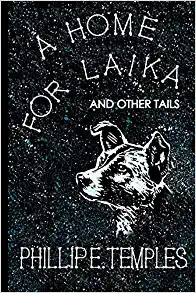Charlotte Pence, Code. Black Lawrence Press. 2020. 100pp. $17.95
Review by Ruth Hoberman
There’s nothing like a pandemic to make you think about how much in life is determined by entities we can’t see, much less control. In her 2020 poetry collection Code, Charlotte Pence explores the tension between the givenness of DNA and the inchoate longings that make us human—a painfully relevant topic at a moment when a virus’s replications can alter the course of our lives. If DNA could write poetry, what would it look like? these poems ask. And how do we write back?
Pence’s first collection, Many Small Fires (2015), explored family through the lens of Darwinism, asking what and whom we sacrifice in the name of survival; in Code, too, science sharpens Pence’s vision as she describes human beings dealing with what she calls in one poem “the limits of the possible.” Science offers Pence a way of asking big questions inventively and expansively: far from being reduced by understanding ourselves biochemically, we are connected more deeply to each other and to the world. “I like being/reminded that we all began in dark and stars,” Pence writes in “The Weight of the Sun”: “that the carbon, nitrogen and oxygen/in our bodies was created 4.5 billion/years ago.” As for DNA, it may contain our death, but it also gives new life to the dead. “My child./Our eyes,” a dying mother says of her young daughter.
This dying mother is at the heart of the book’s Part III, entitled “Code: A Sequence in Twenty-Three Parts.” Its twenty-three poems dramatize a young mother’s death of a degenerative disease encoded in her DNA. This section is the book’s most inventive from a formal standpoint: along with a few sonnets, it includes poems constructed from a multiple choice quiz, from a series of palindromes, and from actual genetic codes. The woman is named A, her husband T, letters which, the endnotes inform us, stand for adenine and thymine, two constituents of DNA. Since a cell contains twenty-three pairs of chromosomes, the twenty-three poems dramatize the extent to which we are our DNA. What does it mean that DNA, that “track laid for/a corporeal train,” determines so much of who we are? That we can inherit a propensity for cancer or Huntington’s disease along with our parents’ love? “Don’t be fooled into thinking you/understand this world,” DNA cautions in one poem. DNA’s perspective is nothing like our own. “Up here/in this bank of blue, this blink of clouds,/everyone is reduced to the hard roof/of their car.”
CRISPR, Pence reminds us in an endnote, stands for Clustered Interspaced Palindromic Repeats. And indeed the book is structured somewhat like a palindrome: parts I and V contain poems drawing on Pence’s life as wife, mother, poet; each of parts II and IV contains an essay by Pence and two poems by Shira Shaiman, a poet-friend of Pence’s; and at the center, Part III: the story of A, T, and their daughter. Clever? Yes. Too clever? Not at all.
The language and structures borrowed from genetics only intensify the impact when humans talk back to what has been encoded—and they get plenty of space to talk back. “Grief, like art, continues to teach/the limits of the possible,” T says, but he stretches those limits as he envisions holding his daughter up in the Paleolithic cave he has read about, so she can poke “the ceiling’s moon milk,/that wet, soft carbonate sparkling like stars/under the forked flame,” stone age and contemporary child melding, joined by the clay, “this moonmilk, mountain, mother.”
Pence enacts T’s thoughts a few pages later, in Part IV’s “Stubby Horses and Why We Paint Them: An Essay,” where she describes visiting the Monte Castillo caves in Spain with her family. She, too, is looking for continuity in the face of death. Indeed the four parts that frame A’s story echo its themes, addressing losses in Pence’s own life—of her poet-friend Shaiman, of her father-in-law, and of a friend’s daughter—losses she chronicles in Part II’s “Codicil: An Essay.” There she describes rereading Shaiman’s masters thesis as she was completing Code. Her inclusion in the book of four poems by Shaiman works an act of love and preservation, and also as an echo-chamber of loss and replication. “Don’t become like me,” Shaiman’s speaker imagines her mother—dying of cancer—telling her.
Loss and the fear of loss pervade Code, but so too does delight in the everyday and in connection. In her essay about visiting the caves, Pence sees, in a child’s handprint on the wall, “that desire to reach out . . . red hands without arms reaching out in the dark.” Reaching hands appear also in “Among the Yellows,” in which a beehive’s “hundred split hexagons,/shining, licked gold” morph into an apartment building where, as the speaker passes by, “A slumped stranger suddenly/leapt from his chair, mouth/open, arms outstretched/to catch something/he loved.” These generous poems extend their own arms toward us—celebrating the many ways we save what we love from oblivion.
Ruth Hoberman is a professor emerita of English at Eastern Illinois University, where she taught modern British literature for thirty years. She has published on Virginia Woolf, biography, and women’s historical fiction. Her most recent book, Museum Trouble: Edwardian Fiction and the Emergence of Modernism, was published in 2011 (University of Virginia Press).
Since her 2014 retirement, she has published poetry and creative nonfiction in (among other places) The Examined Life, Adirondack Review, Michigan Quarterly Review, Natural Bridge, Ploughshares, Calyx, and Rattle: Poets Respond.



